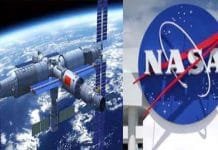Beijing: In a development that could alter the landscape of global warfare, Chinese scientists have tested a powerful new explosive device that mimics the impact of a nuclear blast — without using radioactive materials like uranium or plutonium.
The device, tested at a classified facility under the China State Shipbuilding Corporation (CSSC), utilizes a hydrogen-based compound known as magnesium hydride, a silvery powder that has now entered the global spotlight as a potential tool of military transformation.
A Fireball Without Fallout
According to internal reports, the device triggered a chemical chain reaction resulting in a fireball exceeding 1000°C in temperature and lasting over two seconds — roughly 15 times longer than traditional explosives. Remarkably, no radiation was released during the event.
“This represents a fundamental shift in explosive science,” said a senior defense analyst. “A weapon capable of such thermal intensity, without nuclear materials, is not only unprecedented — it’s geopolitically significant.”
The Science Behind the Blast
The new weapon is powered by magnesium hydride, a compound originally developed for storing and transporting hydrogen in off-grid environments. When exposed to heat and pressure from a traditional explosive trigger, the powder rapidly decomposes, releasing highly flammable hydrogen gas. The ensuing combustion produces a high-intensity thermal blast — effectively a radiation-free hydrogen explosion.
Strategic Manufacturing Breakthrough
Previously, the global production of magnesium hydride was constrained by complex conditions — extreme heat, high pressure, and the risk of spontaneous ignition. But Chinese authorities have now launched a dedicated production facility in Shaanxi province, capable of manufacturing up to 150 metric tons annually, enabling potential military-scale deployment.
A Game-Changer for Modern Warfare
Defense sources suggest that this non-nuclear weapon could be deployed in various military systems, including:
High-impact guided munitions
Power sources for next-gen drones and submarines
Thermal weapons systems with extended blast radius
The key advantage? Nuclear-scale devastation without violating international treaties, thanks to the absence of enriched fissile material.
Hydrogen: The Double-Edged Sword
Hydrogen is widely considered a clean energy solution — but its explosive potential is equally potent. According to research, hydrogen ignites with minimal energy input and spreads quickly, making it ideal for advanced thermobaric weapons.
Unlike traditional bombs, the hydrogen blast creates a prolonged fireball, dramatically increasing structural and thermal damage, all while avoiding the toxic aftermath of nuclear fallout.
Dual-Use Concerns Trigger Global Anxiety
Although China maintains that the technology is intended for civilian applications, including hydrogen fuel systems and industrial energy storage, military experts warn of its dual-use potential.
“This development treads dangerously close to a new class of weapons of mass destruction,” said an arms control expert. “It could allow governments to sidestep nuclear non-proliferation frameworks while achieving comparable effects.”
Future Conflicts May Be Redefined
As nations race to develop next-generation warfare capabilities, the Chinese hydrogen device signals a paradigm shift — combining scientific innovation with strategic ambiguity.
The lack of radioactive residue not only simplifies battlefield deployment, but could also complicate global detection and attribution — raising the risk of untraceable, high-impact attacks in future conflicts.
















